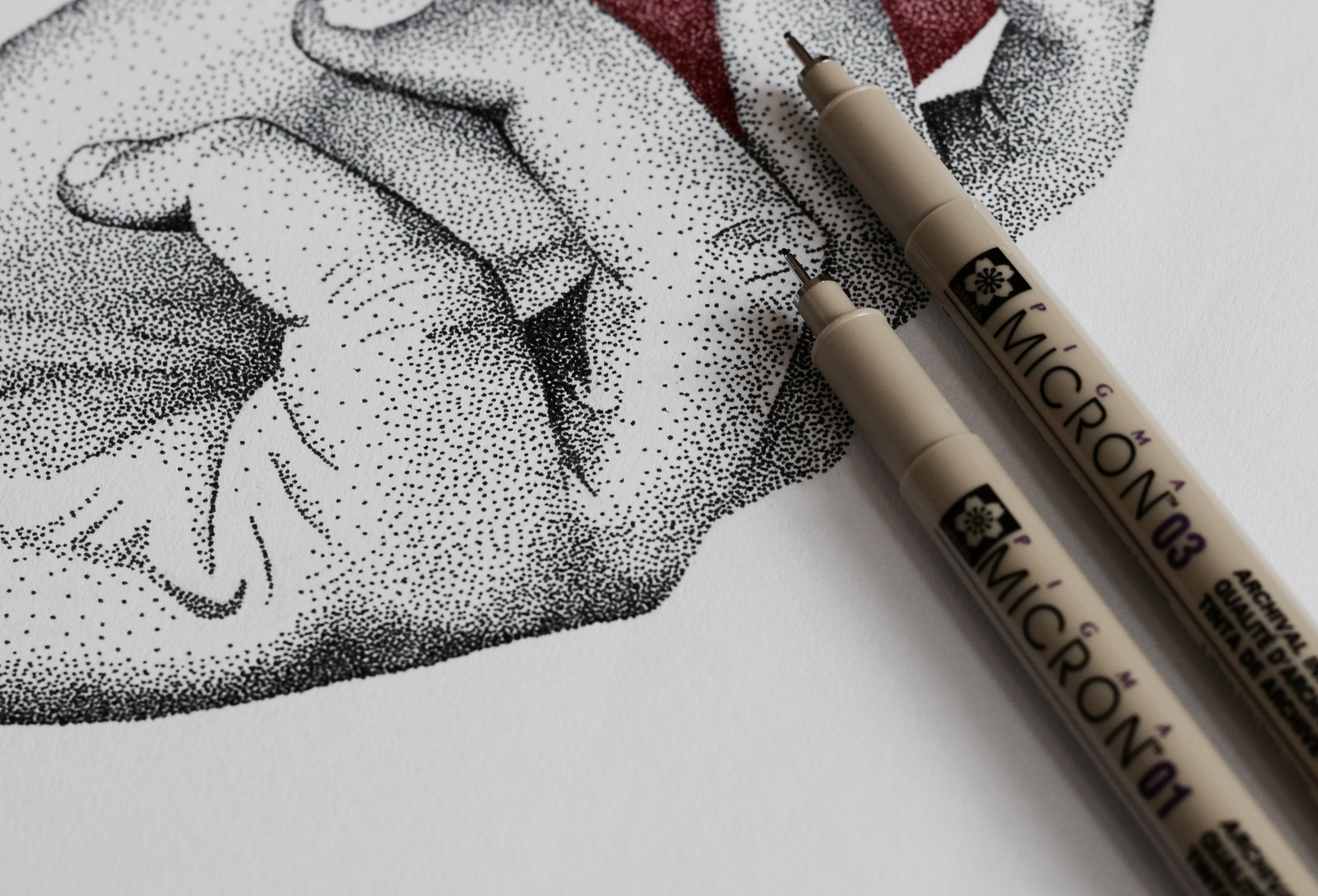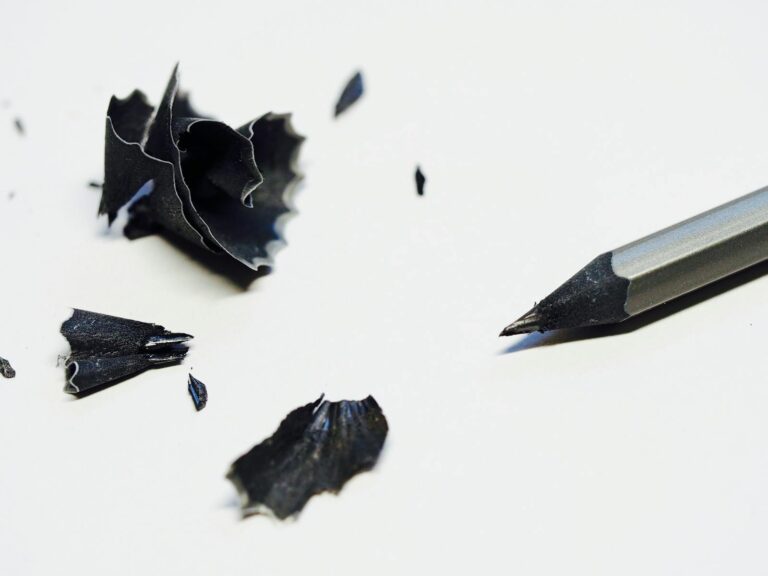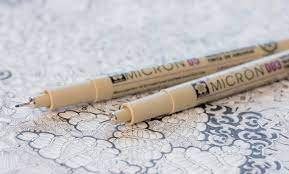Tips For Diving Into Stippling Art
Start with a Pencil Sketch
Before you pick up a pen and start stippling, you need to establish the subject of the drawing with a pencil sketch. The better and more detailed your sketch, the easier the stippling process will be once you reach that point. This becomes more relevant once you get to complex subjects like flowers or portraits, but it is still important when working on simpler subjects.
Choose High Quality Stippling Art Pens
There are many high quality illustration pens on the market you can start with. These include Micron, Copic, Artist’s Loft, Staedtler, and more. It is important that you do some experimenting to find which type works best for you. Using these types of illustration pens will help you to make consistent dots and improve the aesthetic of your stippling art. Each pen type offers several tip sizes. Lastly, it is important to work with heavy drawing paper that absorbs ink well. Bristol paper would be great to start with.
Shading Your Stippling Art
The stippling technique is popular for creating value changes (shadows and highlights). Drawing with dots allows the artist to control how dark they wish to go with his or her shadows. To begin shading an area, place a few dots spaced out from one another. Slowly add more dots to darken the area to your liking. As a rule of thumb, the closer together you place your dots, the darker an area will become. It is important to develop your gradients from dark to light to avoid making lighter areas too dark. You can always add more dots if you need to, but you cannot take dots away if an area becomes too dark.
Separate the Drawing into Small Chunks
As you improve your stippling art and progress to more complex subjects, it would be beneficial to divide the subject into several parts. This can be done using the grid method. Separating the subject into smaller squares will make the creative process less overwhelming. It will also help you narrow your focus, which will lead to improved detailing in complex aspects of the drawing.
Practice
The most reliable and proven method of improvement is practice. Set aside time each day to work on your craft. If you cannot work every day, make it a point to practice every week. Consistency over time is the best way to improve.




